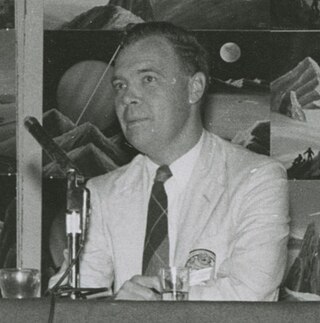
Harry Clement Stubbs, better known by the pen name Hal Clement, was an American science fiction writer and a leader of the hard science fiction subgenre. He also painted astronomically oriented artworks under the name George Richard.
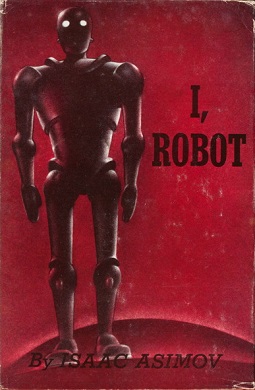
I, Robot is a fixup collection made up of science fiction short stories by American writer Isaac Asimov. The stories originally appeared in the American magazines Super Science Stories and Astounding Science Fiction between 1940 and 1950 and were then compiled into a single publication by Gnome Press in 1950, in an initial edition of 5,000 copies.

Isaac Asimov was an American writer and professor of biochemistry at Boston University. During his lifetime, Asimov was considered one of the "Big Three" science fiction writers, along with Robert A. Heinlein and Arthur C. Clarke. A prolific writer, he wrote or edited more than 500 books. He also wrote an estimated 90,000 letters and postcards. Best known for his hard science fiction, Asimov also wrote mysteries and fantasy, as well as popular science and other non-fiction.
Superluminal communication is a hypothetical process in which information is conveyed at faster-than-light speeds. The current scientific consensus is that faster-than-light communication is not possible, and to date it has not been achieved in any experiment.
Thiotimoline is a fictitious chemical compound conceived by American biochemist and science fiction author Isaac Asimov. It was first described in a spoof scientific paper titled "The Endochronic Properties of Resublimated Thiotimoline" in 1948. The major peculiarity of the chemical is its "endochronicity": it starts dissolving before it makes contact with water.

Anti-gravity is the phenomenon of creating a place or object that is free from the force of gravity. It does not refer to either the lack of weight under gravity experienced in free fall or orbit, or to balancing the force of gravity with some other force, such as electromagnetism or aerodynamic lift. Anti-gravity is a recurring concept in science fiction.
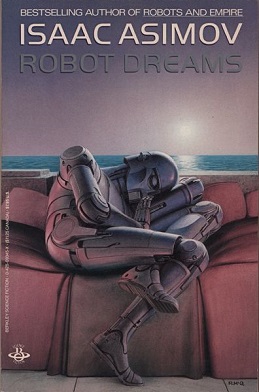
Robot Dreams (1986) is a collection of science fiction short stories by American writer Isaac Asimov, illustrated by Ralph McQuarrie. The title story is about Susan Calvin's discovery of a robot with rather disturbing dreams. It was written specifically for this volume and inspired by the McQuarrie cover illustration. All of the other stories had previously appeared in various other Asimov collections. Four of the stories are robot stories, while five are Multivac stories.

"The Last Question" is a science fiction short story by American writer Isaac Asimov. It first appeared in the November 1956 issue of Science Fiction Quarterly and in the anthologies in the collections Nine Tomorrows (1959), The Best of Isaac Asimov (1973), Robot Dreams (1986), The Best Science Fiction of Isaac Asimov (1986), the retrospective Opus 100 (1969), and in Isaac Asimov: The Complete Stories, Vol. 1 (1990). While he also considered it one of his best works, "The Last Question" was Asimov's favorite short story of his own authorship, and is one of a loosely connected series of stories concerning a fictional computer called Multivac. Through successive generations, humanity questions Multivac on the subject of entropy.
The chronology protection conjecture is a hypothesis first proposed by Stephen Hawking that laws of physics beyond those of standard general relativity prevent time travel—even when the latter theory states that it should be possible. The permissibility of time travel is represented mathematically by the existence of closed timelike curves in some solutions to the field equations of general relativity. The chronology protection conjecture should be distinguished from chronological censorship under which every closed timelike curve passes through an event horizon, which might prevent an observer from detecting the causal violation.
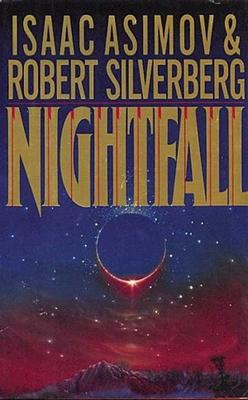
"Nightfall" is a 1941 science fiction short story by the American writer Isaac Asimov about the coming of darkness to the people of a planet ordinarily illuminated by sunlight at all times. It was adapted into a novel with Robert Silverberg in 1990. The short story has appeared in many anthologies and six collections of Asimov stories. In 1968, the Science Fiction Writers of America voted "Nightfall" the best science fiction short story written prior to the 1965 establishment of the Nebula Awards and included it in The Science Fiction Hall of Fame, Volume One, 1929–1964.

The Best of Isaac Asimov is a collection of twelve science fiction short stories by American writer Isaac Asimov, published by Sphere in 1973. It begins with a short introduction giving various details on the stories, such as how they came to be written, or what significance merits their inclusion in a "best of" collection, as well as some of Dr. Asimov's thoughts on a best of collection itself. The stories included are two of his early works, two of his late works (post-1960), and eight from the 1950s, which he refers to as his "golden decade" in the introduction. Except for the last story in the book, "Mirror Image", none of the stories are related to his Robot and Foundation series, while a few mention the Multivac computer.

Fantastic Voyage II: Destination Brain is a science fiction novel by American writer Isaac Asimov, published in 1987. It is about a group of scientists who shrink to microscopic size in order to enter a human brain so that they can retrieve memories from a comatose colleague.

"Anniversary" is a science fiction short story by American writer Isaac Asimov. It was first published in the March 1959 issue of Amazing Stories and subsequently appeared in the collections Asimov's Mysteries (1968) and The Best of Isaac Asimov (1973).
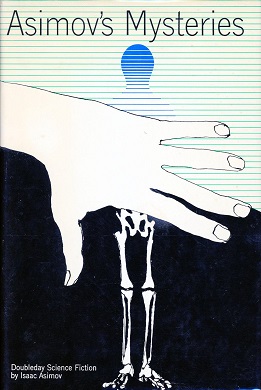
Asimov's Mysteries, published in 1968, is a collection of 14 short stories by American writer Isaac Asimov, almost all of them science fiction mysteries. The stories were all originally published in magazines between 1954 and 1967, except for "Marooned off Vesta", Asimov's first published story, which first appeared in 1939.
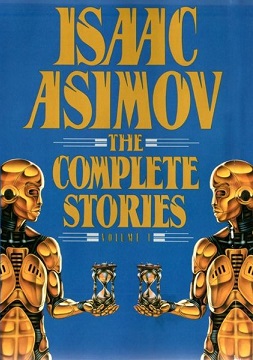
The Complete Stories is a discontinued series intended to form a definitive collection of Isaac Asimov's short stories and novels. Originally published in 1990 and 1992 by Doubleday, it was discontinued after the second book of the planned series. Altogether 88 of Asimov's 383 published short stories are collected in these two volumes.
"The Tachypomp" is a short story by Edward Page Mitchell originally published January 1874 anonymously in The Sun, a New York City daily newspaper. It was Mitchell's first science-fiction story. Mitchell was known for his editorial work on The Sun, but because his science-fiction stories were published anonymously, his well-regarded work was mostly forgotten until its rediscovery in the early 1970s.
"Farewell to the Master" is a science fiction short story by American writer Harry Bates. It was first published in the October 1940 issue of Astounding Science Fiction on page 58. It provided the basis of the 1951 film The Day the Earth Stood Still and its 2008 remake. In 1973, the story was adapted by Marvel Comics for its Worlds Unknown series. According to Gizmodo, the 1973 adaptation was more faithful to the original story than was the 1951 film.
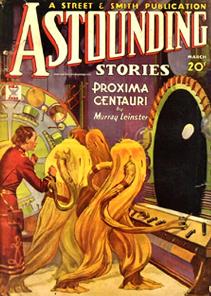
"Proxima Centauri" is a science fiction short story by American writer Murray Leinster, originally published in the March 1935 issue of Astounding Stories. Unusually for the time, the story adhered to the laws of physics as they were known by showing a starship that was limited by the speed of light and took several years to travel between the stars. In his comments on the story in Before the Golden Age, Isaac Asimov thought that "Proxima Centauri" must have influenced Robert A. Heinlein's later story "Universe" and stated that it influenced his own Pebble in the Sky.

The Asimov Chronicles: Fifty Years of Isaac Asimov is a collection of forty eight short science fiction and mystery stories and two science essays by American writer Isaac Asimov, published by Dark Harvest in May 1989.
Depending on the counting convention used, and including all titles, charts, and edited collections, there may be currently over 500 books in Isaac Asimov's bibliography—as well as his individual short stories, individual essays, and criticism. For his 100th, 200th, and 300th books, Asimov published Opus 100 (1969), Opus 200 (1979), and Opus 300 (1984), celebrating his writing.













